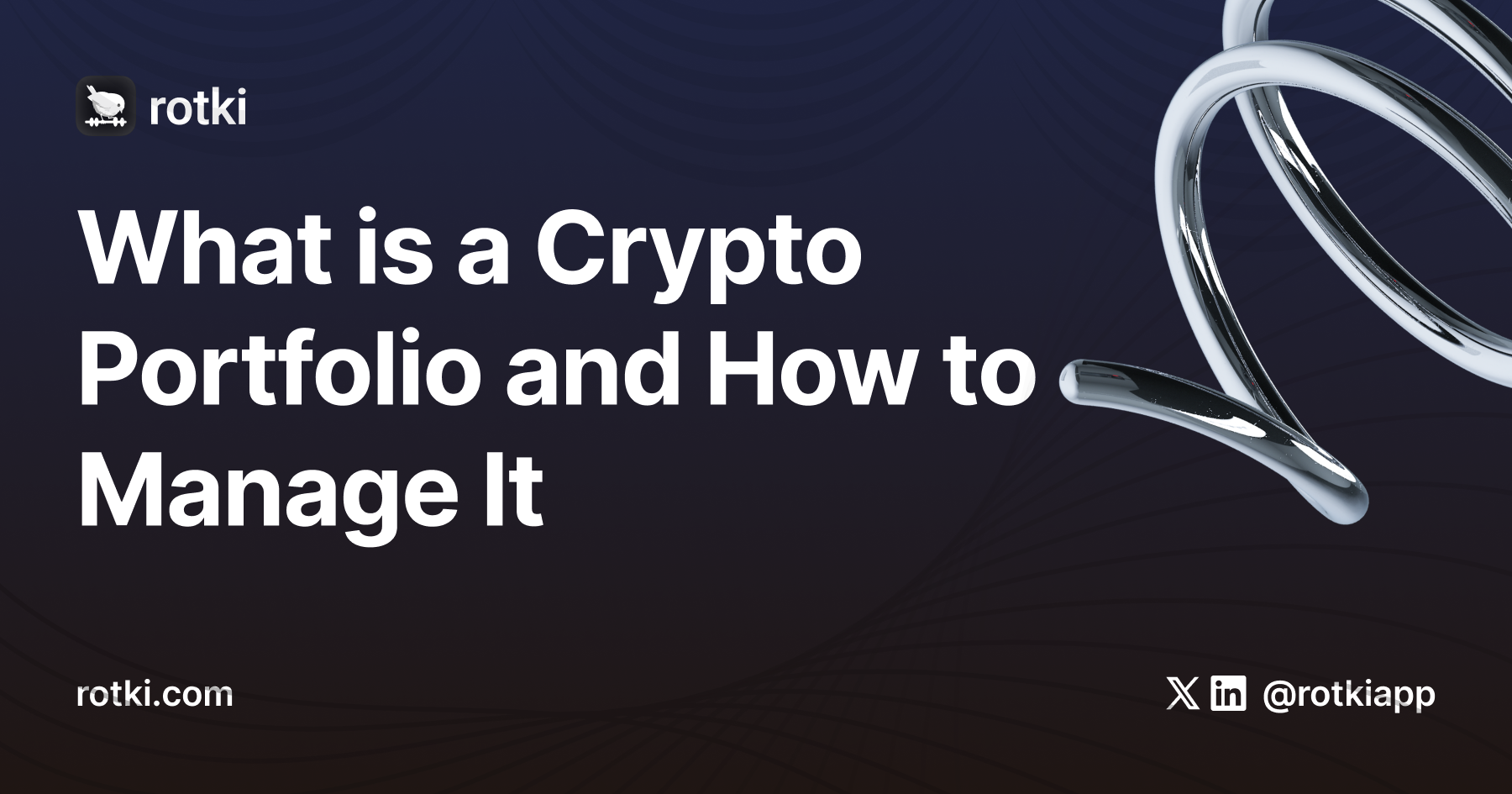What is a Crypto Portfolio and How to Manage It
30 Aug 2024- What is a Crypto Portfolio?
- Key Components of a Crypto Portfolio
- The Importance of Managing a Crypto Portfolio
- Tools for Managing a Crypto Portfolio
- Key Takeaway

As the world of cryptocurrency continues to expand, more investors are venturing into digital assets, building what’s known as a crypto portfolio.
Like a traditional investment portfolio that might include stocks, bonds, and real estate, a crypto portfolio is a collection of various cryptocurrencies and blockchain-based assets owned by an individual or institution.
What is a Crypto Portfolio?
A crypto portfolio represents your entire digital asset holdings. It includes a range of different types of assets you currently hold. Understanding the components of a crypto portfolio is essential for managing risk, tracking performance, and making informed investment decisions.
Key Components of a Crypto Portfolio
- Cryptocurrencies: The foundation of any crypto portfolio, cryptocurrencies are digital or virtual currencies that use cryptography for security. The most well-known examples are Bitcoin (BTC) and Ethereum (ETH), but there are thousands of others.
- Tokens: Tokens are a type of cryptocurrency built on top of an existing blockchain, typically representing more than just currency. They can grant access to a service, represent ownership in a project, or even act as a form of voting rights in decentralized governance. For instance, ERC-20 tokens are built on the Ethereum blockchain.
- Stablecoins: These are cryptocurrencies pegged to the value of a stable asset, such as the US dollar. Stablecoins like Tether (USDT) and USD Coin (USDC) are designed to minimize volatility, making them useful for transactions and as a store of value during periods of market instability.
- NFTs (Non-Fungible Tokens): NFTs are unique digital assets that represent ownership of specific items or content, such as digital art, music, or virtual real estate. Unlike traditional cryptocurrencies, which are fungible and can be exchanged on a one-to-one basis, NFTs are distinct and often used in the context of collectibles and digital ownership.
- DeFi (Decentralized Finance) Assets: DeFi assets are part of a rapidly growing sector in the crypto world that aims to replicate traditional financial services — like lending, borrowing, and trading — without intermediaries such as banks. These assets often provide opportunities for earning interest or participating in governance, and they play a significant role in the portfolios of investors looking to engage in more complex financial strategies.
- Staking and Yield Farming Assets: Staking involves holding a cryptocurrency in a wallet to support the operations of a blockchain network, such as transaction validation, in exchange for rewards. Yield farming, on the other hand, involves lending or borrowing assets through decentralized finance protocols to earn returns. Both practices are popular among investors looking to generate passive income from their crypto holdings.
The Importance of Managing a Crypto Portfolio
Managing a crypto portfolio effectively is crucial for several reasons:
- Diversification: Just as with traditional investments, diversification is key to managing risk in a crypto portfolio. By holding a variety of assets, investors can reduce their exposure to the volatility of any single cryptocurrency or protocol. This approach helps to minimize potential losses and stabilize returns over time.
- Tracking Performance: Keeping track of the performance of each asset in your portfolio is essential. Regularly monitoring your portfolio allows you to see how each investment is performing, helping you decide when to buy, sell, or hold. This continuous oversight is crucial in the fast-moving crypto markets, where prices can fluctuate rapidly.
- Risk Management: Different assets in a crypto portfolio come with varying levels of risk. A well-balanced portfolio takes this into account, blending high-risk, high-reward investments with more stable assets like stablecoins. Managing risk helps protect against significant losses while still offering growth opportunities. There are multiple types of risk. There is volatility risk but also smart contract or protocol risk. With hacks being frequent in crypto an investor needs to take care of both.
- PnL Analysis: Generate information that can make it easier to understand how much profit or loss you have had in a given period. These can also be used for taxes.
Tools for Managing a Crypto Portfolio
Given the complexity of managing a diverse set of digital assets, many investors turn to portfolio management tools. These platforms offer a range of features, including:
- Real-Time Tracking: Get up-to-the-minute updates on the value of your holdings.
- Comprehensive Dashboards: View all your assets in one place, even if they’re spread across multiple exchanges and wallets.
- Analytics and Insights: Access detailed reports on portfolio performance, including profits, losses, and historical data.
One example of such a tool is rotki, an open-source, privacy-focused portfolio management platform. Unlike many other tools that rely on cloud storage, rotki operates locally on your device, ensuring that your financial data remains private and under your control.
It integrates with various exchanges, wallets, blockchains, and protocols, making it easier to track a wide range of assets and stay on top of your portfolio.
Try it out here — rotki.com
Key Takeaway
It is normal for non-investors to assume that a portfolio is just another complex term used in financial markets. In truth, a crypto portfolio is simply a collection of digital currencies that contains assets that, if managed effectively, can lead to significant financial growth. Whether you’re a seasoned investor or new to digital assets, effective portfolio management, performance tracking, and risk management will be key to your success in the crypto space.
If you want more info on rotki:
- Try out rotki’s latest release
- Buy premium, unlock all features and support our development.
- Check out our Github repo and follow us in Twitter.
- Chat with us and other users of Rotki in Discord
